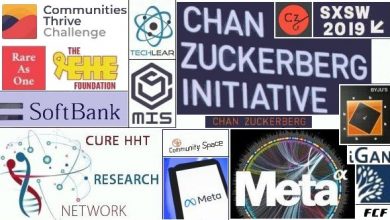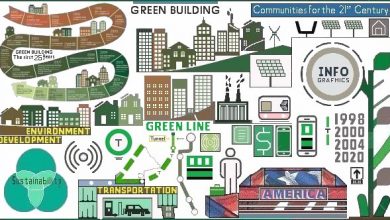
Ruling the new economy with ABCDs
In the world of the new economy, the speed of development in information and communications technology (ICT) continues to grow at an unprecedented rate, and new technological terms have emerged in an endless stream. For most people, even industry experts, it has become quite an impossible task to keep up. So recently, another new term has emerged, coining the four core technologies as “ABCD” – representing A (Artificial Intelligence), B (Blockchain), C (Cloud Computing), and D (Big Data).
Of course, these are not brand new technologies by any means. The ABCDs have been around for some time and have impacted many industries, especially in the financial sector, where their applications are the most salient. Web-based platform have also expanded the channels and methods of information dissemination, greatly reducing the phenomenon of information asymmetry, and widens the customer base for both the supply and demand sides of financial services. Under this new financial ecosystem, market players can now transact and interact with each other directly, removing the constraints of time and space, improving transaction efficiency, and reducing the cost of intermediate agencies and costs.
The most common application of AI in financial technology is Chatbot. Other solutions such as wealth management, credit loans and anti-fraud can all be assisted by AI. Currently there are two types of automated processes based on robots and AI technology: process AI and basic AI. Process-based AI applications can process structured data and can obtain deterministic results. The concept is to apply rules and structure to standardize tasks and workflows, which not only increase efficiency, but also reduce costs. Process robots can be classified as AI that imitates human behaviour; while basic AI applications are good at processing unstructured data and can obtain probabilistic results. These technologies include machine learning, cognitive services, and computing platforms, which can help assist in the detection of frauds and other financial related crimes.
As for blockchain technology, it has been receiving extensive attention in recent years due to the popularisation of cryptocurrency. Its technology attributes of openness, immutability, decentralization and have inherent advantages in financial applications, because in essence, blockchain is an financial ecosystem that mainly solves the problem of trust and security. While most other technologies focus primarily on improving productivity, blockchain on the other hand, is more about changing the psychology and habits. In the future, blockchain applications will continue to develop from single to multiple directions. Different applications such as billings, payment, insurance, and supply chain. It will be highly differentiated in multiple dimensions such as real-time, high concurrency, and latency, and will derive new diversified technical solutions. I believe the current state of blockchain is far from being finalised and will continue to evolve in the future. There is room for efficiency improvement in technical aspects such as consensus algorithms, service fragmentation, processing methods, and organisational forms.
On the other hand, the development of cloud computing technology is comparatively more mature, especially in finance applications. Due to the rich data resources available in the industry and the high degree of reliance on data for business development, the larger financial institutions are now mostly using open source cloud computing technologies. The traditional computing, network, and storage cloud solutions have become obsolete. What businesses require is the upper-level PaaS (Platform as a Service) or even SaaS (Software as a Service).
Cloud computing technology can provide financial institutions with a unified platform, effectively integrate multiple information systems into the financial structure, eliminate information islands, and handle institutional emergencies with full consideration of information security, regulatory compliance, data isolation, and neutrality. Enabling businesses to develop and deploy their offerings quickly online, and provide higher flexibility for future business innovation and reform.
In terms of big data, it will no doubt have a profound impact on our lives and will be a major driving force in the years to come. It is expected that in the next few years, large IT vendors will look for aggressive M&A in order to improve its own big data quality and source, the first to be involved will most likely be information management analysis software vendors, predictive analysis and data presentation vendors. In addition, some analysts believe that a revolutionary new method will appear in big data analysis, and many previous algorithms and basic theories may produce theoretical breakthroughs. Also, machine learning will continue to be the core technology of big data analysis; the combination of artificial intelligence and brain science has become a hot spot in the field of big data analysis. Applications in the fields of finance, e-commerce, health care, and smart cities will be eye-catching.
To summarise, the ABCDs are not mutually exclusive, but are interrelated, complementary and mutually reinforcing. Big data is the basic resource and cloud computing is the infrastructure. Artificial intelligence relies on cloud computing and big data to promote the development of science and technology to the era of intelligence. Blockchain has created conditions for the transformation of business infrastructure and transaction mechanisms in all walks of life, and its realization is inseparable from the support of data resources and computational analysis capabilities. From the perspective of future development trends, emerging technologies such as cloud computing, big data, artificial intelligence, and blockchain are becoming more and more compact in the actual application process, and the technological boundaries between each other are constantly weakening, and there will be more and more technological innovations in the future. The focus will be on areas in technological intersection and integration.











